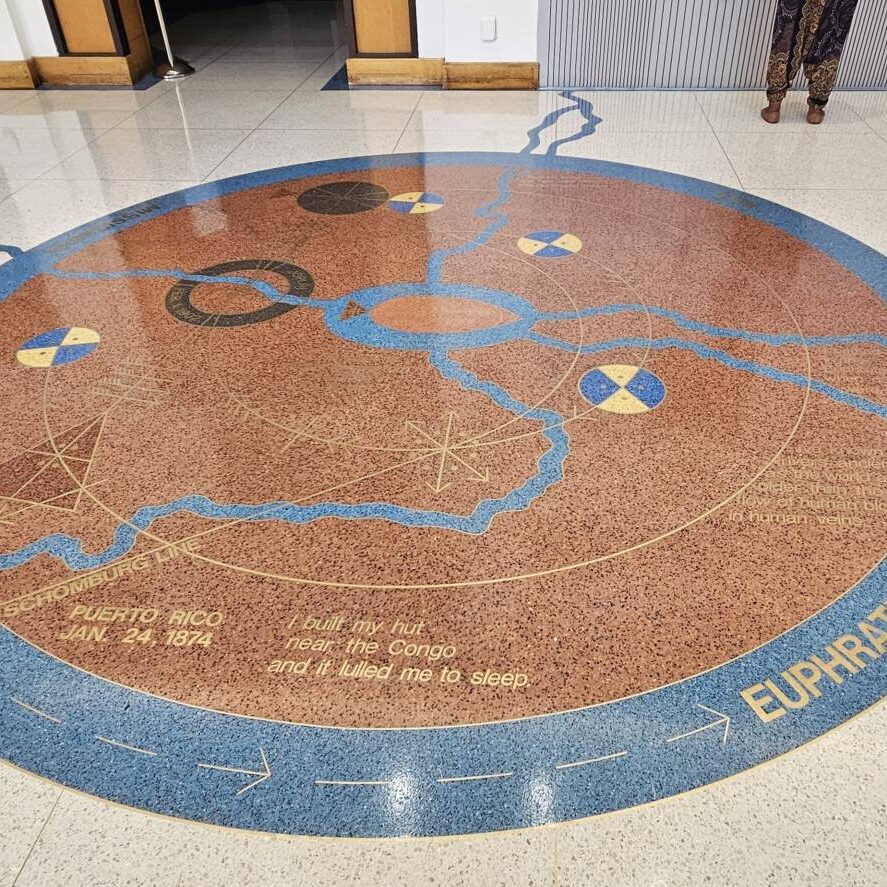
This summer, I had the opportunity to do a fellowship at the Schomburg Center for Research in Black Culture in Harlem. The Schomburg is one of the largest archives of Black History in the world, and as part of my fellowship, I got to use their collections to craft an independent research project. Coming into the program, I had a very specific idea of what I wanted to find in the collections. I had found a disagreement in the scholarly literature about the historical relationship between two church denominations. Some scholars argued that the two denominations were historically one, while others argued that they had always been separate organizations. In the Schomburg’s research catalogue, I saw that there was a collection of personal papers belonging to one of the denominations’ founders, which I saw as an opportunity to add a new perspective to this debate.
The Schomburg Center has five research divisions, and I concentrated my efforts on just one: Manuscripts, Archives, and Rare Books (MARB), which houses the traditional paper documents that you might associate with an archive. From past experiences in archives like these, I knew that historical documents could provide exciting and unexpected insights into the past. So, from the start of the program, I was eager to get into MARB and get my hands on those documents. Unfortunately, there was a hitch in my plan: MARB did not have open research appointments for the first few days of the program. In the interim, I decided to check out some of the Center’s other research divisions.
First, I made my way to Moving Images and Recorded Sound, not expecting to find anything. Divisions like these hold vast collections of video and audio recordings, which can deeply enrich more contemporary historical research. My project was focused on an early 20th-century community that didn’t have access to that kind of technology, but I was surprised to find relevant material in this division, including a 1990s video reenactment of the moment I was studying. It offered a completely different perspective from the literature I had read before, and it led me to wonder how and why different groups remembered this history differently. Sometimes, exploring an archive of materials that seems unconnected to your research can lead to new and interesting questions.
I spent the next day in the Research and Reference division, which is like a traditional lending library, except all the materials are specifically focused on the experiences and expressions of Black people. Before coming to the Schomburg Center, most of the critical histories I encountered had been written from non-Black perspectives. Here, in the Research and Reference division, I discovered so many historical accounts of my research topic written from different perspectives that added a new dimension to the scholarly conversation.
When I finally got an appointment at MARB a few days later, I excitedly read through the personal papers that I had identified in the catalogue. To my disappointment, I didn’t find the answers I was looking for. If I had started my research in this division with these documents, I may have given up here, but thanks to the materials I uncovered in the other divisions, I decided to take my project in a new direction. Instead of trying to find a concrete answer on the true nature of the relationship between these denominations, I turned my attention to how each group remembered their shared history differently. To my surprise, the archive of church and denominational histories was rich. I began requesting different boxes in the collection and materials from different collections to approach the archive as a broader exploration rather than a targeted search. Going into the archive with an open mind transformed the kind of evidence I collected and shifted the focus of my project from searching for an exact account of the past to an analysis of different authors’ historical memories.
Having a clear research plan for archival research can be very helpful, especially if you have limited time with a collection. However, sometimes, it’s even more helpful to explore widely and let the archive reveal to you all the interesting stories that it holds. You may not always find what you were looking for, but you might just find something even more interesting.
— Alison Fortenberry, Social Sciences Correspondent

